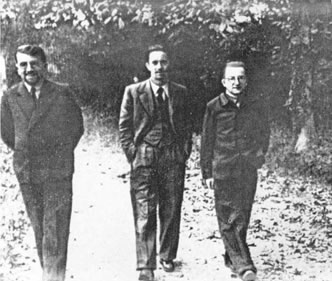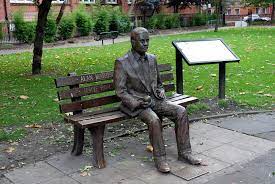The supreme art of war is to subdue the enemy without fighting.
Sun Tzu
Imagine the invisible war. The countries fight for their lives without weapons, soldiers, casualties, and without the property damage. At least not in the conventional meaning. The borders are imaginary.The fighters sit behind giant supercomputers and never see their adversaries. They work in the cubicles, physically detached from the battlefields, not seeing their enemy and how much damage have they inflicted.
The computer games with the enormous stakes.
The virtual war.
The cyber warfare.
The wars were with us since the beginning of time, and their principles are all the same through the ages. It used to be that the bigger army defeated the smaller one. Later, with the superior tactics, a skillful commander could beat the more populous enemy. Soon came the variety of weapons and the adversaries had to create the defense from them. The game of one-man-upmanship. The nuclear bomb became the ultimate threat. Or so it seemed.
The communication within the system was paramount and any kind of compromise could be lethal. The Americans artfully solved it with the help of the Cherokees during WW1 and improved with the Navajos in WW2.
The Germans developed Enigma.
Enigma was a mechanical and electrical rotor cipher machine used for coding. The Germans developed this marvel by the end of WW1 and quickly appropriated for diplomatic and military use. The Allies knew about the device and obviously appreciated the enormous advantage of this mysterious contraption.
A few days ago an article appeared in one of the newspapers: “Trump can win the cyberwar (by following Churchill’s approach)” Link to the article. The author, Van Hipp, is the former Deputy Assistant Secretary of the U.S. Army. Here is the quote from the article:
While a number of the British code breakers were already assembled at Bletchley Park when he became Prime Minister in May 1940, it was Churchill’s personal involvement and leadership that made a big difference. Churchill made sure they had whatever resources they needed and that the best minds were recruited to the effort. In fact, when Turing and other cryptographers made a request for specific resources, Churchill immediately granted it. Further, he engaged directly with the cryptanalysts and would even visit personally to boost their morale. Sir Winston knew the stakes and that his personal leadership was required. The significance of the effort at Bletchley Park in breaking the Enigma Code is best summed up in a letter at the end of the war by then General Dwight Eisenhower, which was recently made public. Ike called the effort of “priceless value” and said it “saved countless British and American lives and, in no small way, contributed to the speed with which the enemy was routed and eventually forced to surrender.”
And then:
Miller, who now teaches at Florida Atlantic University, notes that Winston Churchill directed a focused research effort to crack the German “Enigma Code” which eventually cracked their war machine. He’s right. At the beginning of World War II, Nazi Germany’s “Enigma Code” appeared unbreakable. As shown in the recent movie, “The Imitation Game,” the British brought together the best cryptographers and mathematicians and in the end, under the genius of Alan Turing, built a machine to crack the Nazi’s Enigma machine.
That’s the formally accepted version of the breaking of the Enigma code, widely propagated in “The Imitation Game” movie. The fact, that the British solved the problem, was a lie, or, at best, the partial truth. The author of the article, as well as cited by him Miller, should have known better. If they really didn’t know about the Polish breakthrough, they didn’t do satisfactory research, or, worse, the omission was intentional. The truth is that the Polish mathematicians broke the code in 1932, well before WW2.
Here is the rest of the story.
The Polish government created the Cipher Bureau during the 1920 Polish-Russian war, and its work greatly contributed to us beating the much better equipped and bigger Soviet army. After the news about the German Enigma surfaced, the Bureau charged the young Polish mathematician, Marian Rejewski, with the task of cracking the code. Rejewski, together with two other mathematicians, Henryk Zygalski and Jerzy Rozycki, accomplished the task in 1932 and reconstructed the German Enigma sight unseen. The next year fifteen Polish machines, called “Enigma doubles”, became available to the Polish counterintelligence. They differed with the design of the keyboard; the German had a QWERTY display, the Polish one had ABCDE.

The Brits attempted to acknowledge the lie partially and recently, in a quiet ceremony, admitted a breakthrough achievement of the Polish mathematicians and engineers. Here is the link to the BBC article. Both countries, Great Britain and Poland, worked on breaking the code in the late thirties, knowing that war was imminent. The British hit the snag and looked for help from the Poles. In 1939, right before WW2 broke out, two of the intelligence officers from London had a clandestine meeting on the outskirts of Warsaw, with the French acting as intermediaries. When the meeting was over, they carried with them the Polish version of the machine, called “Enigma double.” At home, the Brits realized why they couldn’t solve the code: they asked linguists for help, whereas the Poles employed mathematicians. The Polish Cipher Bureau had to be evacuated not to be overrun by Nazis. The Poles escaped out of the country. They tried to join the British team working on Enigma, but Churchill denied them the access.
Solving the Enigma code, by some estimates, shortened the war by two years.
After the war, Churchill suppressed the Polish contribution to breaking the Enigma code. He banned all the information pertaining to solving the problem, particularly to the Polish participation in the ultimate success. The first time the world heard about our mathematicians’ work was in the book “How the Poles Broke the Nazi Code” issued in 1967.
The movie “The Enigma Secret”, which came out in 1979, gave the Polish version of the events, and never achieved the publicity, as its British counterpart, “The Imitation Game” in 2014, which didn’t mention our work at all.
I’ve recently visited the Spy Museum in Washington, D.C. There I found an entire room dedicated to the Enigma story.
There, the museum had dismissed the Polish contribution as they “not sophisticated enough” to solve the problem. So, what else is new?
Sad, but not an unusual approach to our efforts in the history.

The monument of Alan Turing in Manchester.

The monument of Marian Rejewski in Bydgoszcz.


